
With all of this Florida, glass block, and underwater theme,
glass tiles seemed like just the right accent for the remaining bathroom
half-walls. In the spirit of doing as much as possible myself, I decided
to take a class, buy a kiln, and see what I could cook up in home-made glass
tiles.
This is a very exciting medium, since there are relatively few glass artists
right now (unlike woodworkers), and to see something this obviously custom is
pretty captivating.

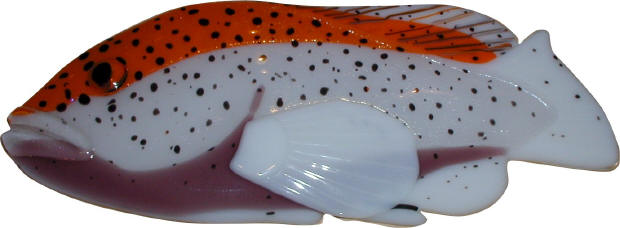 |
The latest addition is called a "Coney" and it's in its
interesting-looking bicolor phase. It changes its look several times
in its lifespan. This fish is different than the previous one because
its eye is made from glass that was manipulated directly in a torch flame.
The dorsal fin spines are similarly made from different color strips and
rods of glass fused together and twisted in a flame. Although it
doesn't photograph well, the body is defined by iridescent clear glass that
gives real depth to the fish. |
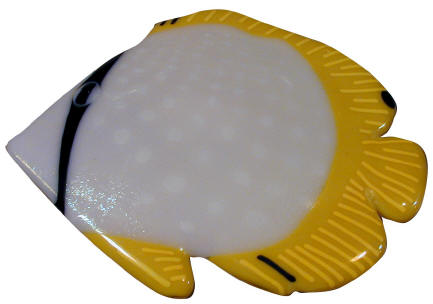 |
Here's one of the new glass fish. I think it's called
a Spotfin. Below is the making of this fish in detail. |
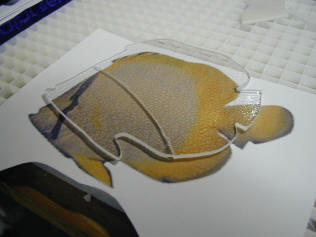 |
To make this Spotfin, I started out with a piece of clear base, which
broke the wrong way during cutting. Since it will be underneath other
layers, I really didn't care about the break. A printing of the
picture that I am copying is underneath. |
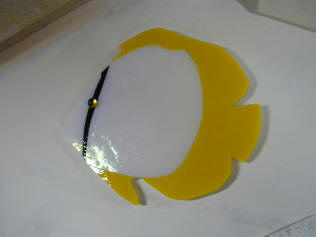 |
The five parts are cut and placed together carefully on top of the clear
and in the kiln. I had previously made some fisheyes by placing a
small chip of black on top of a larger chip of yellow. When firing
these chips, they not only fuse together, but become quite spherical because
of the surface tension. |
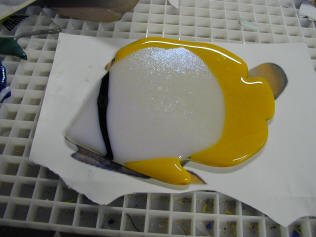 |
Here's the result of that first firing. All of the edges are
rounded ("fire-polished"). Notice how the eye has become complete fused into
the black stripe. This is a mistake that we'll fix later. Also,
we'll have to clean up the edges around the tail, which has fused together
too much. A special diamond coated jigsaw makes quick work of that. |
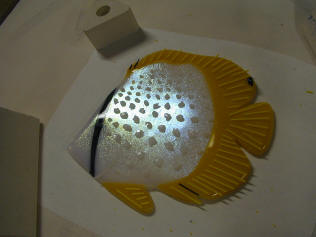 |
Next, we add a few interesting details. Tiny rods of glass called,
"stringers" are fashioned into spines in the fins. crushed chunks of
glass called "frit" is arranged onto the body to give some texture.
Rather than the full fuse temperature that was used in the last firing,
we'll "tack-fuse" these elements into place so that they still give some
surface texture. |
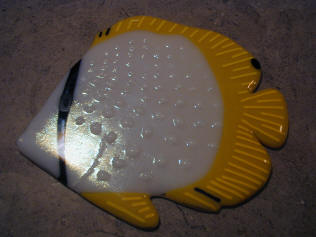 |
This is the result. Now to fuse a better eye... |
|